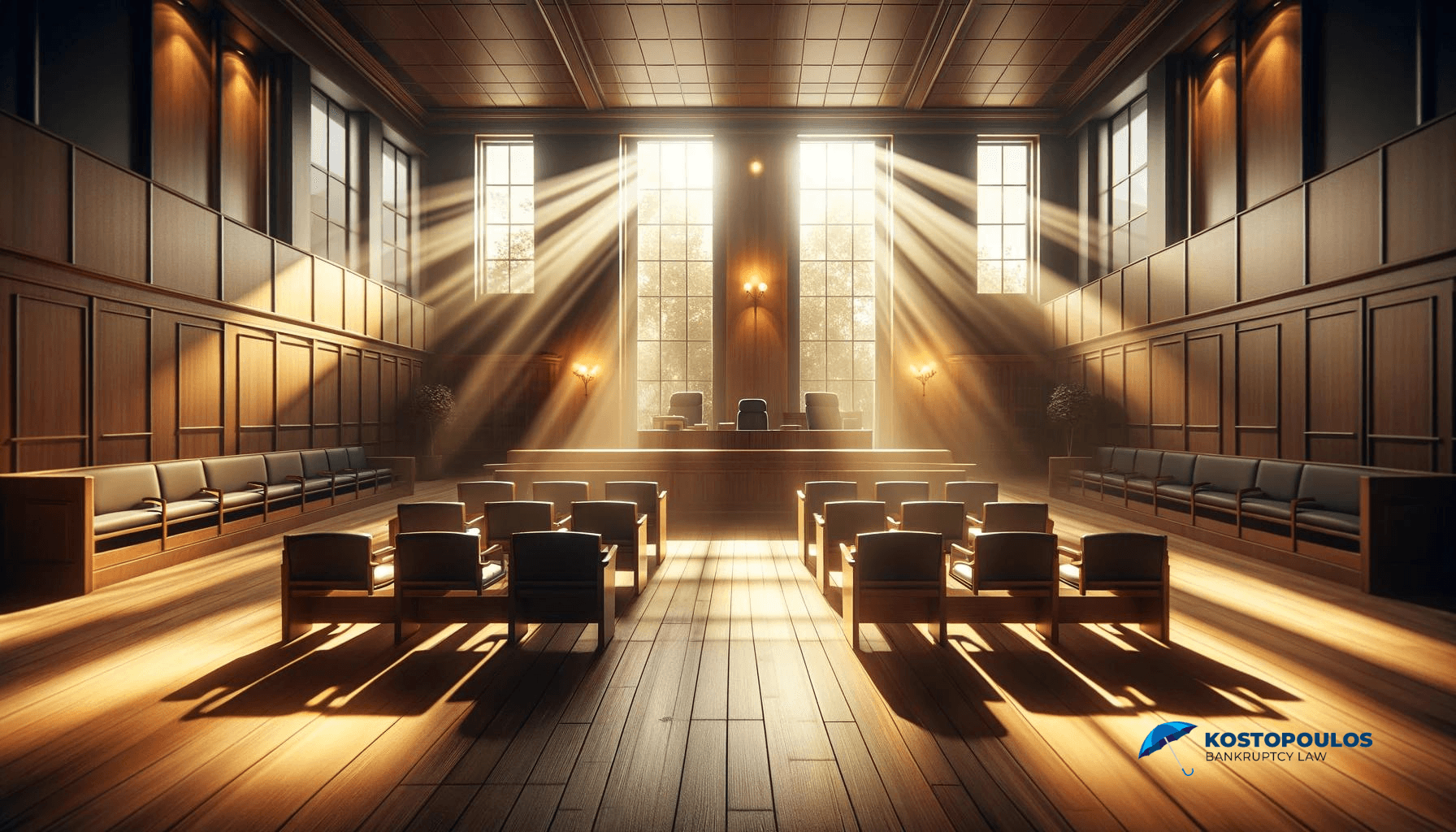
What’s the Difference Between Chapter 7 and 13 Bankruptcy in California?
If you have determined that bankruptcy is a suitable option for resolving your debt, you have probably learned about the outcomes and implications for your future. The benefits of filing bankruptcy are more clear once you do some research and find that you can actually look forward to a brighter future. When you go through the legal process, you emerge debt-free and will no longer be weighed down by crushing debt.
With improved financial standing and remaining debt less, many more opportunities open up. However, there is another important decision to make about the process. You must assess whether Chapter 7 or Chapter 13 bankruptcy is the best solution to struggles with outstanding debt.
The two types of cases are similar in some ways, with the overall objective being to resolve your debt. Still, the process and eligibility rules are very different. You can only take advantage of the benefits when you choose the right option for your circumstances.
Fortunately, your California bankruptcy attorney has the knowledge and experience to guide you in making informed decisions. Plus, you can also read on for some background on the difference between Chapters 7 and 13.
Key Differences Between Chapters 7 and 13

One important distinction between these two types of bankruptcy is that the rules to qualify are far stricter with Chapter 7. This is because the remedy of completely discharging your debt is harsh for the creditor who loses money.
The rules for Chapter 7 are written to ensure that only those filers who truly need debt relief, will be eligible. Chapter 13 rules are more relaxed because there is some satisfaction of the debt through the repayment plan.
Another important difference is that there is no liquidation aspect in a Chapter 13 case. You do not have to worry about your assets being sold off to pay creditors. However, even in Chapter 7 bankruptcy, the bankruptcy trustee may not choose to liquidate. If an asset will not bring creditors debtors or a reasonable profit, there is less chance that it will be sold.
How Chapter 13 Bankruptcy Works in California
The rules under Chapter 13 also lead to the discharge of qualifying debts upon completion of the case. However, the primary rule to qualify is simplified. The only requirement is that you have a job and a regular income. This is because the focus of the bankruptcy case is the Chapter 13 debt repayment plan.
As you work through the foreclosure process, you will propose an arrangement to satisfy your debt to creditors. To complete the court approved repayment plan’s terms, you must show that you can pay by having regular employment.
Your debt repayment plan will last 3 to 5 years, depending on your circumstances. The monthly payment amount is one that is based on your income, ensuring it your plan payments is one you can afford. As a result, you will end up paying a portion of what you owe, but mortgage payments are often just a small percentage of mortgage payments. Once you complete the plan and your case ends, all eligible debt is wiped out.
A Deeper Understanding Chapter 13 Bankruptcy
Chapter 13 bankruptcy, known as the wage earner’s plan, enables individuals with regular income to develop a plan to make sufficient income to repay creditors all or part of their debts. Under this type of bankruptcy, debtors propose a repayment plan to make installments to creditors over three to five years. Key aspects include:
- Flexibility in Repayment: Chapter 13 offers the flexibility to restructure debts and extend the repayment period, potentially lowering monthly payments. This can be particularly beneficial for those with secured debts, such as a mortgage or car loan, as it allows for arrearages to be caught up over time.
- Protection of Assets: One of the most significant benefits of Chapter 13 is the ability to protect your assets from foreclosure or repossession. This pathway provides a solution for those seeking to keep their home or other valuable assets while managing their debt.
- Debt Limits: It’s important to note that Chapter 13 has debt limits. If your secured and unsecured debts exceed these limits, you may need to consider Chapter 11 bankruptcy, which is typically used by businesses but can also apply to individuals with substantial debt.
Chapter 7 Bankruptcy Basics
The best way to understand how Chapter 7 bankruptcy works is to review the critical rules and steps in the process.
- The point of Chapter 7 is to discharge debts for those who qualify based on income. All eligible debts are eliminated once the process is complete.
- The rules to qualify for Chapter 7 are strict, but you may automatically be eligible if your income falls below the state median income level. If your earnings exceed this threshold, you may still qualify through the Means Test. You may be eligible through your income when it is adjusted according to the monthly bills you pay.
- There is an attempt to satisfy your debt to creditors through liquidation in Chapter 7. The bankruptcy trustee can sell your assets, though only those allowed by law. Plus, you can apply exemptions to protect assets.
In-Depth Look at Chapter 7 Bankruptcy
Chapter 7 bankruptcy, often referred to as liquidation bankruptcy, provides a fresh start for individuals who find themselves unable to meet their financial obligations. It’s designed for those with limited income, offering a way to discharge unsecured debts such as credit card balances, medical bills, and personal loans. Here’s a closer look at the nuances of Chapter 7 in California:
- Eligibility Criteria: Qualification for Chapter 7 is determined through a means test, which compares your income to the median income for a household of your size in California. If your income is below this threshold, you’re likely eligible. Otherwise, the means test will consider your expenses and income to determine if you qualify.
- Exemptions in California: California law provides exemptions that allow you to protect certain assets from liquidation, including equity in your home, car, household goods, and retirement accounts. Understanding these exemptions is vital as they play a significant role in protecting your property.
- The Liquidation Process: Not all assets are sold in a Chapter 7 case. Exempt assets are protected under California law, and in many cases, individuals can keep most of their property. Non-exempt assets, if any, are liquidated by the trustee to pay creditors.
Similar Benefits for Both Types of Bankruptcy in California

Despite the differences line bankruptcy itself, there is one advantage you will enjoy no matter whether you file for Chapter 7 or Chapter 13 bankruptcy. With these cases, the US bankruptcy court will impose an automatic stay on creditor efforts to collect your debt. This rule goes into effect immediately when you file your petition, so creditors are barred from:
- Calling or contacting you;
- Threatening a lawsuit;
- Filing a collection lawsuit;
- Garnishing your wages;
- Starting or continuing foreclosure proceedings; and,
- Repossessing your vehicle.
Another benefit of going through bankruptcy is that the stress of being in a dire financial situation disappears. You will not be avoiding creditors and worried about being served with a lawsuit. There are some types of debt you cannot discharge, such as alimony, child support, and some types tax debt because of taxes. However, by eliminating qualifying debt, you free up your earnings to pay those debts or pay creditors debtors you cannot wipe out.
Summary of the Bankruptcy Process in California
The processes for Chapter 7 and Chapter 13 are similar, and your California bankruptcy lawyer will handle the important legal requirements on your behalf. You can expect your experienced bankruptcy attorney’s fees to lawyer for attorney’s fees and to tackle the following tasks during the proceedings.
- Gather, review, and organize your financial documents, including paperwork on your assets, income, and debts;
- Prepare and file the Chapter 7 or Chapter 13 bankruptcy petition;
- Represent you at the meeting of creditors, during which you will be asked questions about your petition and finances; and,
- Wrap up the bankruptcy case and obtain the final order discharging debt.
Choosing Between Chapter 7 and Chapter 13 Bankruptcy
Financial Goals and Future Planning
Understanding your long-term financial goals is crucial in choosing the right bankruptcy or chapter 13. Chapter 7 might be the best choice if you’re looking for a quick resolution to eliminate unsecured debts. However, if you aim to keep your home and car while restructuring debt payments, Chapter 13 could be more aligned with your objectives. Reflecting on where you see yourself financially in the next five to ten years can guide your decision.
Impact on Credit
Although both bankruptcy types affect your credit, the impact and recovery timeline differ. Chapter 7 bankruptcy remains on your credit report for ten years, whereas Chapter 13 stays for seven years. However, the path to rebuilding your credit can begin immediately after discharge in both cases. Understanding the nuances of credit recovery post-bankruptcy is vital for making an informed choice.
Debt Types and Amounts
The nature and amount of your unsecured debt play a significant role in deciding which bankruptcy chapter to file. Chapter 7 is efficient for discharging unsecured debts, but it has limitations on handling secured debts, like mortgages or car loans, without losing the associated assets. On the other hand, Chapter 13 allows for the reorganization of secured debt, and can include provisions for catching up on missed mortgage or car payments, thereby preventing foreclosure or repossession.
Personal and Financial Circumstances
Personal circumstances, such as your employment status, income stability, and family size, influence the choice between Chapter 7 and Chapter 13. For individuals with a steady disposable income exceeding the state median and who can afford a repayment plan, Chapter 13 may offer a viable solution. Conversely, for those with incomes below the state median or with little disposable income, Chapter 7 could provide a quicker relief from debts.
The Bankruptcy Process: Step by Step

Consultation with a Bankruptcy Attorney
The first step in the bankruptcy process is consulting with a knowledgeable bankruptcy attorney. This initial consultation will help you understand your legal options, the differences between Chapter 7 and Chapter 13, and what chapter best suits your situation.
Pre-Bankruptcy Credit Counseling
Before filing for bankruptcy, you’re required to complete a credit counseling session from an approved agency. This session aims to ensure you understand all available debt relief options, including bankruptcy and its alternatives.
Filing the Bankruptcy Petition
Filing the bankruptcy petition is the formal step that initiates your case. This document includes detailed information about your debts, income, expenses, and assets. For Chapter 13, you’ll also submit a proposed repayment plan.
The Automatic Stay
Upon filing, an automatic stay immediately takes effect, stopping most creditors and debt collectors from continuing collection actions against you. This stay provides relief from harassing phone calls, lawsuits, and other collection activities while your bankruptcy case is pending.
Meeting of Creditors (341 Meeting)
Approximately a month after filing, you’ll attend the meeting of creditors, where the trustee and any interested creditors can ask questions about your finances and the information provided in your bankruptcy filing.
Discharge of Debts
In Chapter 7, debts are typically discharged a few months after filing. In Chapter 13, discharge secured debt only occurs after the court approves the completion of the repayment plan, usually three to five years from the start of the case.
Strategies for Recovery and Rebuilding Credit Post-Bankruptcy
Creating a Budget and Sticking to It
Post-bankruptcy financial management begins with creating a realistic budget that accounts for all your income and expenses. Sticking to this budget is crucial for avoiding future financial distress.
Rebuilding Credit Wisely
After bankruptcy, aim to rebuild your credit score through responsible financial behavior. Start with a secured credit card, use it for small purchases, and pay the balance in full each month. Over time, consider a small installment loan to diversify your credit mix, always ensuring timely payments.
Regular Monitoring of Your Credit Report
Regularly monitoring your credit report is essential for spotting errors or inaccuracies that could impact your credit score. You’re entitled to a free report from each of the three major credit bureaus annually.
Financial Education and Planning
Invest time in financial education to learn about saving, investing, and managing debt. Consider working with a financial advisor to plan for your financial future, including setting up an emergency fund and saving for retirement.
The Role of a Bankruptcy Attorney

Navigating the complexities of bankruptcy requires a deep understanding of the law and an awareness of how it applies to your unique situation. Kostopoulos Bankruptcy Law specializes in guiding clients through the intricacies of both Chapter 7 and Chapter 13 bankruptcies. Our experienced team is dedicated to providing personalized advice and representation, ensuring that you make decisions that are in your best interest.
Overview of Life After Bankruptcy
Many people know that there are consequences for their credit when they file bankruptcy, and they affect what is revealed on your credit report and your credit score. A a Chapter 7 bankruptcy case remains part of your history report for ten years, while a Chapter 13 bankruptcy stays for seven years. Your credit score could drop up to 200 points or more, depending on the circumstances.
However, you can rebuild credit after Chapter 7 or Chapter 13 bankruptcy. Any payments you make for your mortgage, utilities, medical bills and related bills are reported to credit bureaus, showing a positive track record. You may also be able to obtain a secured credit card, debt secured, in which you deposit funds as collateral for the loan.
Financial Stability Post-Bankruptcy
Filing for bankruptcy can provide a much-needed reset button for your financial life, but what comes after is crucial for long-term stability and success. Understanding how to navigate post-bankruptcy challenges is key to making the most of this fresh start. Here’s how you can approach your financial future with confidence and strategic planning:
1. Embrace Financial Education: Knowledge is power, especially when it comes to managing your finances. Seek out resources, workshops, and courses on budgeting, saving, and investing. Many nonprofit organizations offer free or low-cost financial literacy programs that can provide valuable insights into managing money effectively.
2. Develop a Robust Budget: The cornerstone of financial stability is a realistic and comprehensive budget. Post-bankruptcy, it’s essential to track your income and expenses meticulously. Use budgeting tools or apps to help you stay on top of your finances and avoid overspending. Remember, a budget isn’t a one-time setup; it’s an evolving plan that should be reviewed and adjusted regularly.
3. Rebuild Your Credit Wisely: After bankruptcy, you’ll need to rebuild your credit score. Start by obtaining a secured credit card and using it responsibly. This means making small purchases that you can pay off in full each month. As your credit score improves, you can consider other forms of credit, such as a credit builder loan, to further enhance your creditworthiness. Always ensure timely payments and keep your credit utilization low.
4. Plan for Emergencies: An emergency fund is a critical component of financial stability. Start small, even if it’s just a few dollars from each paycheck, and aim to build a reserve of three to six months’ worth of living expenses. This fund acts as a financial buffer that can help you avoid debt in case of unexpected expenses.
5. Consider Long-Term Financial Goals: With your immediate financial situation stabilized, it’s time to think about the future. Whether it’s saving for retirement, purchasing a home, or investing in education, setting clear, achievable goals can guide your financial planning. Consult with a financial advisor to create a strategy that aligns with your objectives and risk tolerance.
6. Stay Informed and Adapt: The financial landscape is constantly changing, and staying informed can help you make better decisions. Keep abreast of changes in tax laws, investment opportunities, and financial products that can impact your finances. Be prepared to adapt your financial plan as your circumstances and goals evolve.
Moving Forward After Bankruptcy
Bankruptcy can significantly impact your credit, but it also offers a path to rebuild your financial foundation. Post-bankruptcy, it’s essential to adopt sound financial practices, such as budgeting, timely bill payments, and gradually rebuilding credit. Secured credit cards and installment loans can be effective tools for demonstrating financial responsibility to credit bureaus.
Discuss Options with a California Bankruptcy Lawyer
The differences between Chapters 7 and 13 can significantly impact your case, so it is wise to get solid legal advice from the earliest stages of the process. To learn more about the proceedings, please get in touch with Kostopoulos Bankruptcy Law to set up a consultation with a member of our team. A California bankruptcy attorney will assess your circumstances and provide personalized details.
Related Content: What Happens to Your House After Bankruptcy in California?
